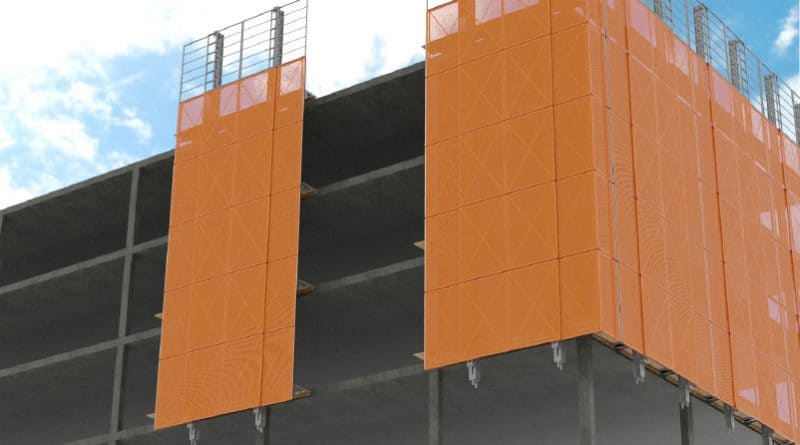Debris protection demands on the up for Ireland
With Ireland’s National Planning Framework guiding development and investment over the coming years, one key aspect that has been reviewed is the height limit for new residential buildings set by local authorities.
Ian Fryer, Divisional Innovation Manager at RMD Kwikform outlines the key considerations that contractors must bear in mind when specifying a safety screen system for building at height, and the efficiency gains the latest innovations can help deliver.
With the previous traditional development models for cities in Ireland deemed as being unsustainable, restrictions on maximum building heights in towns and cities have been lifted. Ireland’s population is set to grow by one million in the coming decades, with demand for new housing climbing over 500,000 units by 2040. However, last year only 21,000 new homes were delivered. As a result, the strategy of building residential developments ‘up’ – coupled with sound urban design and strong transport links – is seen as a key means of meeting the housing demands that Ireland will face in the future.
It should go without saying that health and safety should never be compromised in the construction industry. As buildings get taller in Ireland’s cities, ensuring an assured edge protection system is in place to keep construction workers and the general public safe has never been more important. An M20 nut, for example, falling 12 floors will gain 50 joules of kinetic energy; over 14 joules is enough to fracture a human skull. It is, therefore, critical that adequate edge protection is specified. This is particularly true with cast concrete construction, where slabs extend beyond a building’s footprint, and the opportunity for debris to fall over the edge is high.
To meet these needs, Irish contractors should be considering tried and trusted safety screen systems. Providing maximum debris sealing, these deliver assured perimeter edge protection for site operatives, preventing falls from height, as well as sealing in construction debris and stopping objects from falling. Safety screen systems also accommodate various climates, with solutions available that can shelter workers from wind and rain, while providing ventilation too. This, ultimately, helps minimise downtime as well.
Other benefits include helping reduce vertigo for workers, further improving productivity levels too. Multi-level safety screens can, therefore, significantly speed up working cycles for contractors.
There are a range of key considerations that contractors need to bear in mind when specifying a safety screen system. The available space will influence whether safety screens arrive preassembled or are assembled on site. The capabilities of on-site operatives may also dictate whether systems arrive ready-assembled.
Wind load is also an important consideration when erecting safety screens for tall buildings, and only becomes more critical as the height increases.
Location is a key consideration when specifying safety screens too, as these can represent a significant opportunity to carry publicity messages for a development. Using this opportunity to help offset the cost of the system can enable the contractor to justify the use of safety screens on factors other than just perimeter protection.
The latest debris protection solutions offer features such as the capability to support multiple slab level access, enabling work to commence quickly and safely at levels below the wet decks, as well as multi-screen hydraulic climbing capabilities, which reduces the reliance on crane availability while improving operational efficiencies too. Other benefits include single depth profiles that can be more easily transported to site and multiple screen cladding options that can accommodate complex building geometries. As a result, the latest edge protection solutions can help ensure Irish contractors feel confident that the systems meet the necessary health and safety standards for mid to high-rise developments.
In conclusion, as the height of developments in Ireland’s cities continue to rise, health and safety is set to become even more of a concern in the Irish construction market for the foreseeable future. Nevertheless, by taking a best practice approach when selecting an appropriate solution and taking advantage of the latest edge protection systems available, Irish contractors can make sure on-site perimeter protection is assured.
The content of this site is subject to copyright laws and may not be reproduced in any form without the prior consent of the publishers. The views expressed in articles do not necessarily represent those of the publishers. This article first appeared in Irish building magazine.

